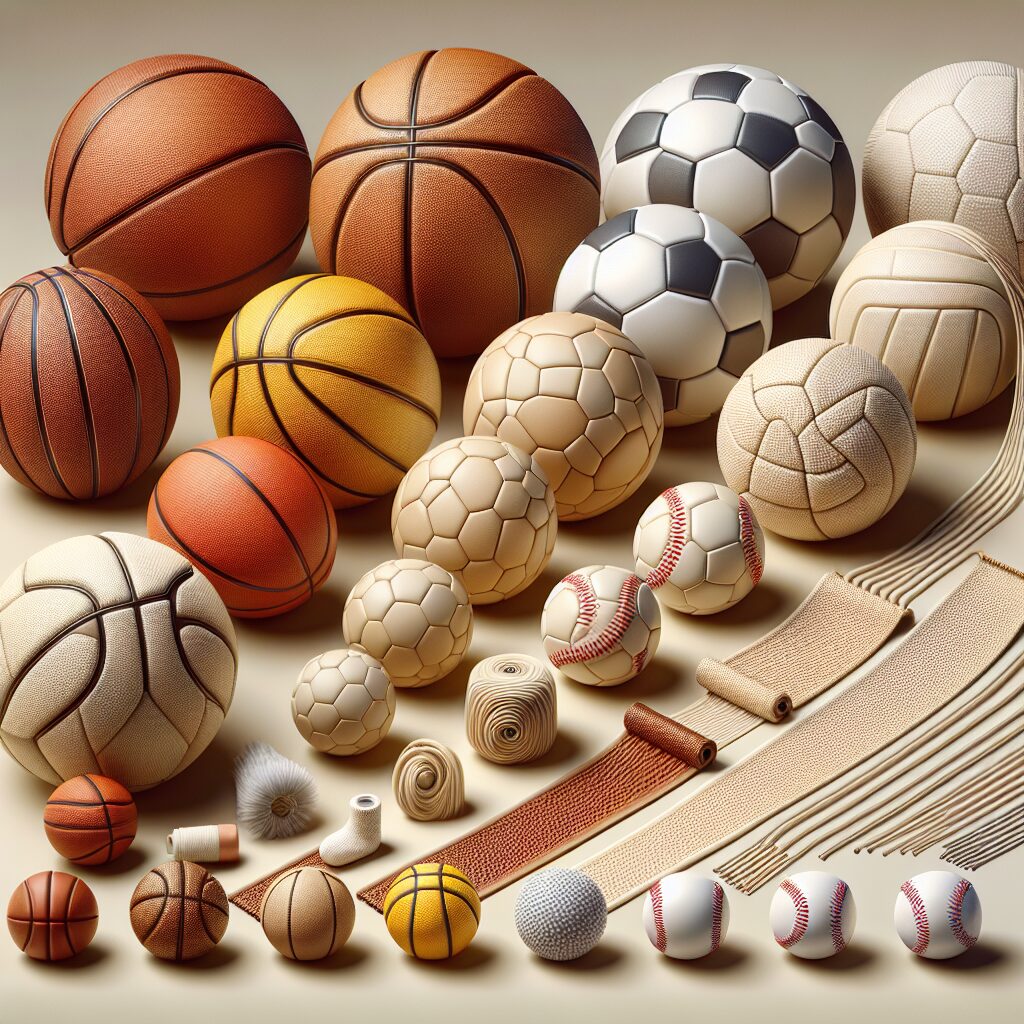Golf balls are one of the most important pieces of equipment for any golfer. Not only do they help golfers hit further and straighter, but they also affect the overall performance of a golf game. But have you ever wondered how golf balls are made? In this article, we’ll take a closer look at how these small pieces of equipment are engineered and manufactured in order to produce the perfect golf ball for any situation.Golf balls are spherical objects used in the sport of golf. They are typically made of a hard plastic or rubber material and filled with air or liquid. The dimples on the surface of the ball help to reduce air resistance as it moves through the air, allowing it to travel further. Golf balls come in a variety of sizes, materials, colors, and compression rates. Different types of golf balls are used for different types of golf shots, such as woods, drivers, irons and putters.
Materials Used to Make Golf Balls
Golf balls are typically made from several different materials, including rubber, synthetic rubber, ionomer resin, and a variety of other materials. The materials used to make golf balls vary based on the manufacturer and type of ball being made.
Rubber is one of the most common materials used to make golf balls. It is a durable material that offers good resilience and flight distance. It also has the ability to absorb impact and prevent deformation upon impact with the club face. This helps the ball maintain its shape throughout its flight and reduces spin off of the clubface at impact.
Synthetic rubber is another material commonly used in golf ball construction. It offers better durability than natural rubber and allows for greater control over spin rates and trajectory. It also reduces side spin due to its ability to deform upon impact with the club face.
Ionomer resin is a type of thermoplastic elastomer that is often used in combination with other materials in order to enhance performance characteristics such as spin rate, launch angle, distance, and durability. Ionomer resins are typically more expensive than natural rubber or synthetic rubbers but offer superior performance characteristics that make them desirable for use in golf balls.
In addition to these materials, manufacturers may use additional components such as metal cores or other components that can affect a golf ball’s performance characteristics. These components are typically designed to enhance the overall flight characteristics of the ball while also providing increased durability.”
The Molding Process
The molding process is an integral part of the manufacturing of plastic components. It involves heating and forming the material into the desired shape and size. The process requires special equipment such as injection molding machines, extruders, and dies. The most commonly used method is injection molding, which involves injecting molten plastic into a pre-formed cavity in a die to create the desired product. Injection molding is a relatively quick process that allows for high production rates and uniformity of parts. The other methods such as extrusion and compression molding are used for forming shapes that cannot be easily made by injection molding.
The quality of the molded product depends on factors such as temperature, pressure, and timing. Temperature needs to be carefully monitored during the entire process to ensure that the plastic material does not degrade due to overheating or burning. Pressure must also be carefully maintained during the entire process in order to obtain a good product with consistent properties throughout its surface. Lastly, timing is essential because too much time can lead to a poor quality molded product or too little time can result in incomplete parts or inaccurate dimensions.
In order to ensure quality of molded products, there are certain steps that need to be taken before embarking on any project. For example, it is important to make sure that all materials being used are up-to-date and compatible with each other before beginning the molding process. It is also important to make sure that all machines being used are properly calibrated for optimal performance during production runs. Additionally, it is important to have an experienced operator who can manage all aspects of the process from start-up through completion.
Ultimately, the goal of any molding operation should be maximum efficiency while producing products of superior quality for customers. By following these guidelines and utilizing modern techniques such as computer aided design (CAD), manufacturers can maximize their profitability while ensuring customer satisfaction with their finished products.
Core Formation
The core is the inner most layer of the Earth, and it makes up a large part of our planet’s mass. It is made up mostly of iron and nickel, and it is responsible for generating Earth’s magnetic field. The core is divided into two parts: the inner core and outer core. The inner core is solid and composed mostly of iron, while the outer core is liquid and composed of iron and nickel. Both layers are extremely hot, with temperatures reaching up to 5,400°C (9,800°F).
The formation of Earth’s core has been studied extensively over the years. According to most theories, the Earth’s core was formed shortly after its formation 4.5 billion years ago when heavy elements such as iron sank to the center of Earth due to its higher density. This process is known as planetary differentiation and it explains why heavier elements such as iron are found at the center of planets.
In addition to planetary differentiation, scientists believe that meteorites may have also played a role in forming Earth’s core. Meteorites contain metallic elements such as iron which could have been incorporated into Earth’s mantle during impacts billions of years ago. Over time, these elements may have sunk to the center due to their higher densities.
Finally, it is thought that radioactive decay may have contributed to the formation of Earth’s core by generating enough heat to cause heavy elements such as iron to sink towards the center over time. This process is known as thermal convection and it explains why we find heavier elements at greater depths within Earth.
Overall, there are many theories about how Earth’s core was formed but most agree that it was likely a combination of planetary differentiation, meteorite impacts, and thermal convection that resulted in our planet’s unique structure.
Winding the Cores
The process of winding the cores is an important step in motor manufacturing. It involves winding thin wire around the core, which will create a magnetic field when energized. This winding process must be done carefully and precisely, to ensure that the motor operates correctly and efficiently. The number of windings, their spacing, and the direction in which they are wound all affect the performance of the motor.
The first step in winding the cores is to choose the type of wire that will be used for winding. Different types of wire have different electrical properties, so it is important to select a wire that has the desired characteristics for your application. Once this has been determined, it is time to start actually winding the cores.
The next step is to determine how many turns are required for each core. This depends on several factors including voltage and current requirements as well as size constraints. After deciding on how many turns are needed, it’s time to begin winding them onto the core. This can be done either manually or with an automated machine depending on the size of the job and complexity of design.
Once all of the wires have been wound onto their respective cores, it’s important to secure them in place so that they don’t move during operation. This usually involves using a type of adhesive or other binding material to keep them firmly in place. Once this has been done, any electrical connections must also be made before testing can begin.
Testing is essential in order to make sure that everything works properly and that all safety standards are met before releasing a product into production or onto store shelves. During testing, current flow through each core needs to be monitored in order to make sure that there aren’t any shorts or other problems with how they were wired up. If everything looks good then it’s time for production!

The Covering Process
The covering process is an important part of the home construction process. It involves covering the entire surface of a building with an appropriate material, such as shingles or siding. Covering materials protect the home from weather damage and can also enhance its aesthetic value. The most common type of covering material is asphalt shingles, but there are other options available, such as wood shakes, metal shingles, and stone veneer. Each type of material has its own advantages and disadvantages, so it is important to research each option before making a decision.
The covering process begins with preparing the surface for installation. This generally involves removing any existing materials and inspecting for any damage that may have occurred over time. After the surface has been prepared, the chosen covering material can be installed according to manufacturer’s instructions. This may involve nailing or stapling certain types of materials, while others may require adhesive or even stucco for installation. Once all of the materials have been installed, it is important to seal any seams or joints in order to ensure that water does not penetrate into the home’s interior.
Finally, after all of the materials have been installed and sealed properly, it is important to inspect them regularly for signs of wear or damage. This can be done during routine maintenance visits or during more comprehensive inspections conducted by a professional inspector. Regularly inspecting your home’s covering will help to ensure that it continues to look its best and provide maximum protection against weather damage for years to come.
Adding the Dimples
Golf is a game of precision and accuracy and having the right equipment is essential for achieving the desired results. One of the most important pieces of equipment is the golf ball, and many players put a great deal of thought into what type they use. A common feature on balls used by more experienced players is dimples. Dimples help to reduce drag on the ball as it flies through the air, increasing its range and accuracy. There are two ways to add dimples to a golf ball – by hand or using a machine.
Hand-punching dimples requires a special tool that looks like a pointed awl. The tool is pressed into the surface of the ball, leaving small indentations that create turbulence in flight and reduce drag. This method takes much longer than using a machine, but some players prefer it because they feel they can create more precise patterns.
Using a machine to add dimples has been used for decades and is now standard practice in golf ball production. It involves engraving small indentations with rollers that press into the surface of the ball with extreme precision and uniformity. This process takes much less time than hand-punching but still produces an accurate pattern of dimples that helps increase range and accuracy in flight.
No matter which method is used to add dimples to a golf ball, they are an essential part of any golfer’s arsenal if they want to improve their game. Dimples reduce drag on the ball as it flies through air, which increases its range and accuracy, making it easier for experienced players to hit their target more consistently than ever before.
Quality Control Testing
The process of Quality Control Testing is necessary for any organization or business to ensure that the delivered products or services meet the required standards and specifications. Quality Control Testing involves the use of various tools and techniques to assess the quality of a product or service, such as inspection, sampling, and testing. The purpose of Quality Control Testing is to identify potential issues before they become bigger problems. This helps to ensure that the customer receives a quality product or service that meets their expectations.
Quality Control Testing can be done manually or with automated processes. Manual testing involves a team of quality control professionals inspecting each component of a product or service to make sure it meets the required standards. Automated testing can involve using specialized software programs to test various aspects of a product or service, such as its usability and functionality.
Quality Control Testing is an important part of any organization’s operations, as it helps to ensure that customers receive products and services that meet their expectations. It also helps to protect organizations from liability due to errors in production, which could lead to expensive lawsuits if left unchecked. Quality Control Testing helps organizations save money by eliminating costly mistakes in production and ensuring customer satisfaction with their products and services.
In conclusion, Quality Control Testing is an essential part of any organization’s operations, as it helps ensure customer satisfaction and protect them from potential liabilities due to errors in production. It is important for organizations to invest in quality assurance measures such as manual inspection and automated testing in order to guarantee the highest level of quality for their products and services.

Conclusion
Golf balls are complex pieces of equipment that require the use of several materials and processes to produce. From the solid core to the dimples, each element is carefully crafted and designed to optimize performance in different areas of the game. The development of modern golf balls has drastically changed the way that players approach their game, with manufacturers continuing to refine existing designs and develop new ones.
The manufacturing process for a golf ball requires a variety of materials and technologies, from injection molding to spin coating. The production line includes a series of machines that shape, coat, stamp and polish the ball before it is packaged and shipped out.
All in all, producing a golf ball is a complex process that requires precise engineering and attention to detail in order for it to meet industry standards. Quality control is an essential part of this process, as any defects can severely reduce the performance of the ball on the course. With advances in technology, manufacturers are now able to produce golf balls with greater accuracy than ever before.
From its origins as a hard leather-coated object with no dimples, golf balls have evolved into highly specialized pieces of equipment tailored for different playing styles. By understanding how golf balls are made, players can better appreciate their design and how it affects their game.




